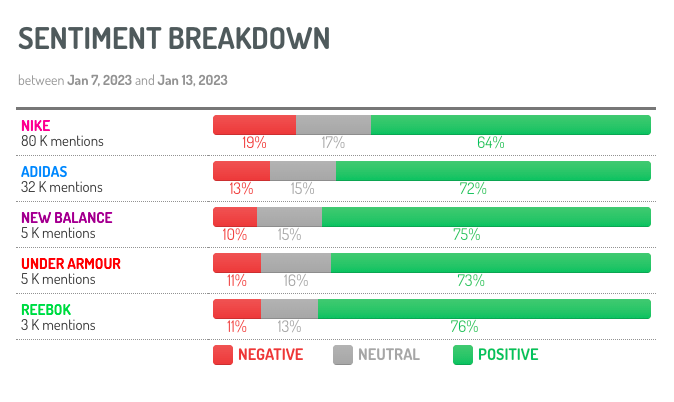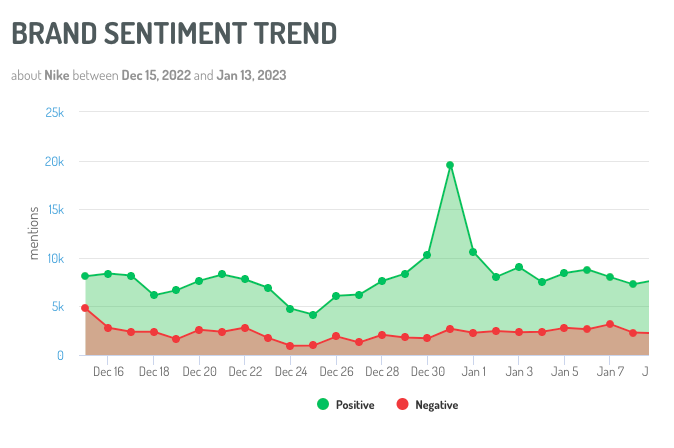Sentiment Analysis: The Powerful Tool Professional Marketers Can't Afford To Ignore
These are trying times for businesses. Competition is fierce. Customers have several options. As a brand, if you fail to establish that personal connection with your customers, they are highly likely to switch to your competitors.
So, is there a way you can understand what your customers think about your products/services and customer service? How can you take a proactive approach toward collecting customer feedback and working on any shortcomings?
The process of Sentiment Analysis is a way for marketers to get a read on how their customers are feeling about their products. It looks at the emotional state of customers and tries to make attributions about that emotional state so that marketers can better understand them. That's why it's important that you don't ignore sentiment analysis - your customers will be much happier with you, and your bottom line will thank you.
What is Sentiment Analysis?
Sentiment analysis (also known as opinion mining or emotion AI) refers to the usage of computational linguistics, natural language processing, and text analysis to identify and draw inferences from various sources. These could be customer opinions, feedback, feelings, and attitudes.
In marketing, sentiment analysis can be used to track customer emotions connected with a product, service, department, or brand. Using social media monitoring tools, this can be achieved in real-time. Sentiment analysis can also be used to analyze historical data, such as customer reviews or survey responses.

Sentiment comparison between various sport shoe brands
There are many applications for sentiment analysis in marketing. For example, it can be used to understand how customers feel about a brand or product, gauge the effectiveness of marketing campaigns, or track competitor activity. It can also be used to detect early signs of a crisis, such as negative sentiment spikes on social media.
Sentiment analysis is a powerful tool that every professional marketer should be using. It provides valuable insights into customer sentiment and can help marketing professionals alter their marketing strategies or address pain points.
Why do marketers use sentiment analysis?
Sentiment analysis is a powerful tool that can help marketers understand how their customers feel about their product or service. By understanding the sentiment of their customers, marketers can make better decisions about what to say and how to position their products or service. Additionally, sentiment analysis can help marketers identify potential issues with their product or service and address them before they become a problem.
One of the main reasons marketers use sentiment analysis is to understand how their customers feel about their product or service. This information is then used to make critical decisions related to marketing campaign creation, customer service, product development, and feedback incorporation.
Additionally, sentiment analysis can help marketers identify potential problems with their product or service and take steps to address them before they become a bigger issue.
Who benefits from sentiment analysis?
Sentiment analysis can be a powerful tool for professional marketers. It can help them understand how their customers feel about their products and services, and it can also help them proactively identify conflicts and areas of improvement. Additionally, sentiment analysis can help marketers gauge the effectiveness of their marketing campaigns and track customer sentiment over time.
There are a number of sentiment analysis tools available, and each has its own strengths and weaknesses. Some sentiment analysis tools are better at identifying positive sentiment, while others are better at identifying negative sentiment. There is no one-size-fits-all solution, and the best tool for your needs will depend on your specific goals and objectives.
How does sentiment analysis work?
Sentiment analysis is a process of determining whether a piece of writing is positive, negative, or neutral. It can be used to analyze reviews, articles, social media posts, and other forms of text.
There are a few different ways to do sentiment analysis. One way is to use natural language processing (NLP) algorithms to automatically classify the text. This approach can be accurate, but it requires a lot of training data and can be expensive to implement. Information to be analyzed is collected from customer reviews and testimonials on e-commerce websites as well.
There is another way to perform sentiment analysis. That’s by using human annotators. This approach is less expensive and can be more accurate, but it requires more time and effort.
In general, sentiment analysis works by taking a piece of text and breaking it down into small pieces (tokens). Each piece is then classified as positive, negative, or neutral. The overall sentiment of the text is then determined by the proportion of positive, negative, and neutral tokens.
Sentiment Score
It becomes essential to calculate Sentiment Score because that determines the emotions associated with your brand. For example, on a scale of 0 to 10, 0 determines the most negative sentiments while 10 represents the most positive sentiments. Various factors are taken into account to calculate the sentiment score. These can be how strong the expressed emotions are, the type of emotion, how frequently the emotion is expressed, the purpose of expressing the emotion, and more. Then, by referring to lexicon-based sentiment analysis, the text is analyzed to see whether the words are negative or positive.
What kind of businesses can benefit from Sentiment Analysis?
The main use cases for sentiment analysis are:
- Product-based companies: Sentiment analysis can be used to analyze customer feedback on products or services. It can help product-based companies understand what their customers like and dislike about their overall product quality, customer service, and more. Companies can then use this information to improve the quality of their products or services. This is the need of the hour. As a brand, you must strive to know what your customers feel about your product packaging, delivery, customer service, and experience with your brand.
- Service-oriented brands: Sentiment analysis is being used by many companies as a way to monitor customer sentiment towards customer service and identify potential issues before they become problems. Using sentiment analysis, you can easily identify potential problems in your services and offer your customers a better experience.
- Political campaigns: Now more than ever, political parties use sentiment analysis to understand people’s opinions and create targeted campaigns to influence the public. Politicians often use sentiment analysis when campaigning for an election or during a political debate. They want to know what people think about them so that they can adjust their strategy accordingly if needed.
 Brand Sentiment Trend of Nike
Brand Sentiment Trend of Nike
How can you take advantage of sentiment analysis?
Sentiment analysis can give you valuable insights into how your customers feel about your brand, product, or service. It can also help you to identify and track any negative sentiment so you can address it quickly and effectively. By taking advantage of sentiment analysis, you can ensure that your marketing efforts are aligned with your customer’s needs and expectations.
What are some of the benefits of using sentiment analysis?
The benefits of using sentiment analysis include but are not limited to:
- Improved customer satisfaction: by taking into account how your customers feel about your brand, product, or service, you can make necessary changes to improve their experience and satisfaction.
- Early identification of negative sentiment: if there is the negative sentiment around your brand, product, or service, sentiment analysis can help you identify it quickly so you can address the issue before it becomes a bigger problem.
- Improved marketing efforts: by understanding how your customers feel about your brand, product, or service, you can ensure that your marketing efforts are better aligned with their needs and expectations. This results in higher ROI and better marketing campaign results.
- Better decision-making: sentiment analysis can provide valuable insights that can help you make better decisions about your business. This can be used to gain insights into almost every business process or department.
- Increased ROI: by taking advantage of sentiment analysis, you can improve your bottom line by making sure that your marketing efforts are more effective.
Conclusion
With the development of technology, it has become possible to derive valuable insights from social media data. It's time for your company to go past KPIs based on overall emotion and count. Recently, businesses have been utilizing data, but to obtain the most detailed information, you must use AI, deep learning, and intelligent classifiers like contextual semantic search and sentiment analysis. Make the most of sentiment analysis to obtain detailed information about your customers’ opinions and feedback and get past your competitors.


